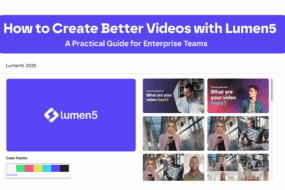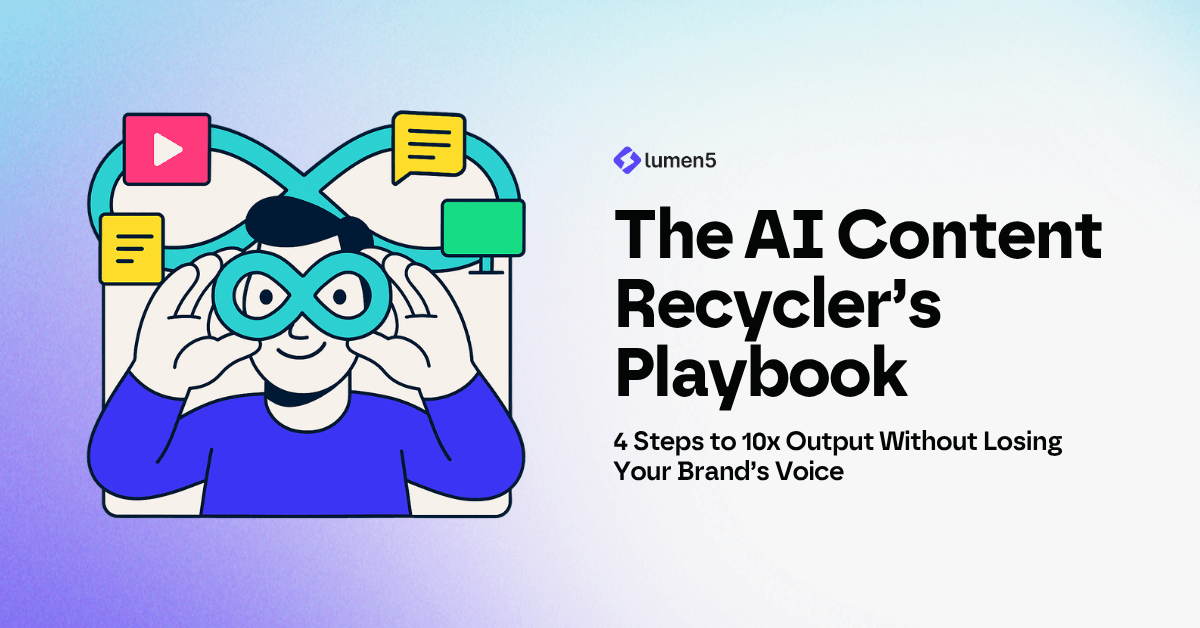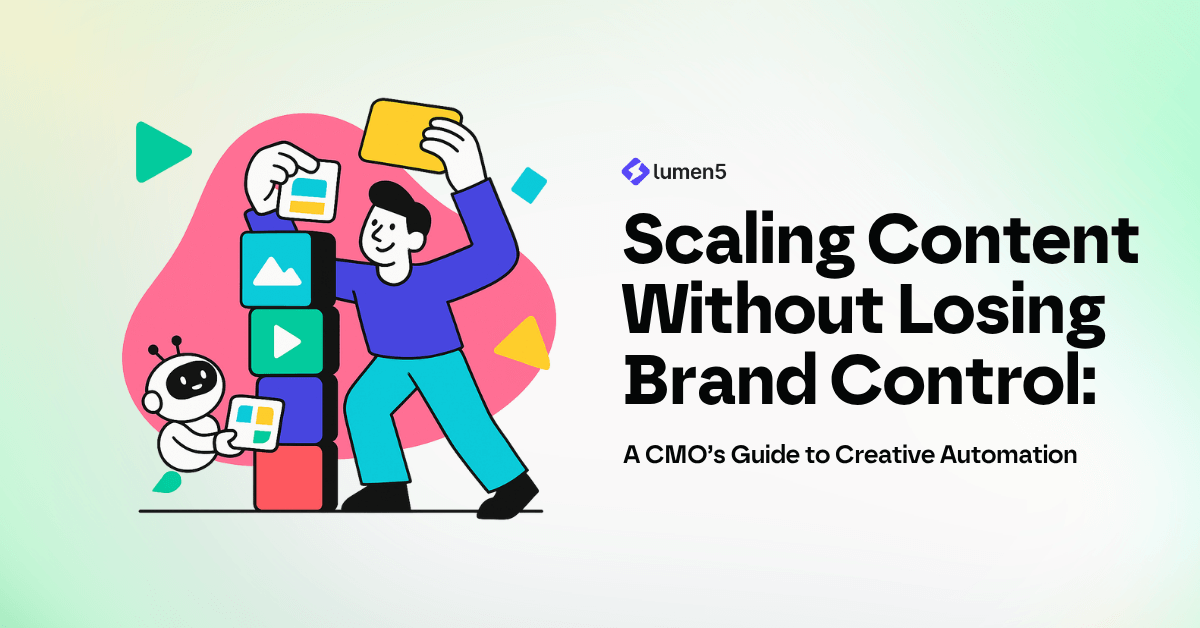
Will This Replace Us?” What the Brand and Creative Teams Got Wrong About AI
The email subject line read:
“AI tools coming to marketing—what does this mean for brand?”
It was supposed to be a routine pilot announcement. Instead, it kicked off a week of tension between marketing, brand, and creative teams at a Fortune 500 company.
On one side:
The brand team, worried about losing control of the company’s visual identity. If everyone could now create video content, what would happen to brand consistency?
On the other:
The creative team, exhausted and skeptical. They weren’t afraid of being replaced, they were tired of drowning in low-skill video requests. “If AI can take the load off,” one designer muttered, “where’s the sign-up form?”
It was a perfect storm of misunderstanding. And it’s happening in enterprise organizations everywhere.
Let’s be clear: Lumen5, and tools like it, aren’t about removing people from the equation. They’re about refocusing people where they’re most valuable.
- Brand teams shouldn’t be policing font choices in every campaign video.
- Creative teams shouldn’t be wasting time turning a press release into 12 social cutdowns.
- Marketing leaders shouldn’t be stuck between scale and sanity.
This isn’t a story about fear. It’s a story about unlocking potential.
Here’s what happened after that tense week:
- The brand team worked with Lumen5’s onboarding specialists to create custom branded templates—with fonts, logos, transitions, and motion all locked down.
- The creative team gave input on video pacing, rhythm, and storytelling rules.
- Marketing teams across regions used those templates to produce compliant content, without needing to file a design request.
A month later, the same teams that feared chaos were reporting faster go-to-market timelines, less stress, and more room for real creativity.
No one was replaced. But everyone was refocused.
This post is for the marketing leaders navigating those same cross-functional frictions. We’ll show you how to introduce AI content creation tools like Lumen5 in a way that enhances brand governance, frees up creative energy, and delivers scalable content without compromise.
Because the real threat isn’t AI. It’s failing to evolve while your competitors do.
The Real Problem Isn’t Headcount. It’s Creative Overload.

If you run a large marketing org, you’re not short on talent.
You’re short on bandwidth.
Every week, creative and brand teams are hit with a flood of asks:
- “Can you make a version of this in 4:5 for LinkedIn?”
- “This blog needs a teaser video, ideally today.”
- “We’re launching in EU, can we get 8 local versions of this by next Monday?”
These aren’t strategic asks. They’re volume asks, and they’re overwhelming your team.
Let’s break this down.
For Creative Teams: Death by 100 Tiny Requests
Your senior designers didn’t go to art school to edit social video captions.
Yet every day, they’re pulled away from campaign work to resize a thumbnail or re-cut an explainer.
It’s not that the work is beneath them.
It’s that repetitive, low-lift tasks steal time from the work that actually drives impact.
This creative drain shows up in missed deadlines, low morale, and strategic blind spots. When your most talented people are doing template-level work, no one wins.
For Brand Teams: Control Slips Through the Cracks
Brand managers aren’t making videos, but they’re constantly reviewing them—often late in the process.
Because when everyone from product to internal comms starts making video content without oversight, you get:
- Misaligned colors
- Off-brand transitions
- Wrong logo versions
- Messaging that doesn’t match the tone of voice
It’s not intentional sabotage. It’s the cost of manual oversight in a high-velocity world.
According to the Content Marketing Institute’s 2024 B2B Benchmark Report, nearly half of B2B marketers lack a scalable model for content creation, meaning most teams are still relying on manual, ad hoc workflows to meet rising demands. That’s not a resourcing issue. That’s a systems issue.
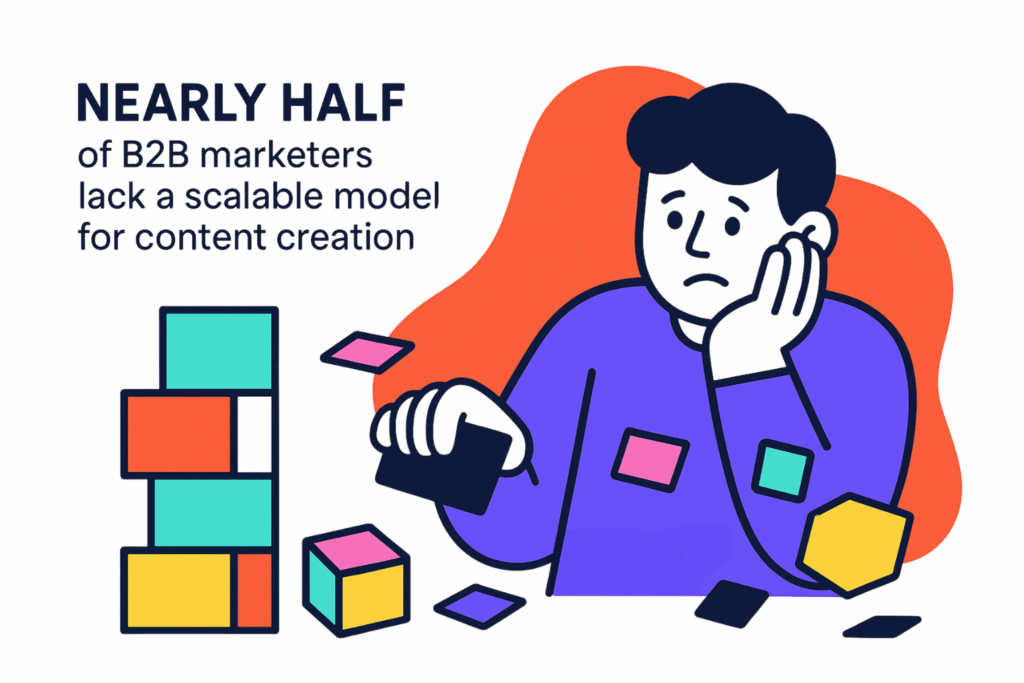
So What’s the Real Problem?
It’s not a lack of headcount, a gap in talent, or a refusal to collaborate.
It’s that you’re relying on old workflows to solve modern content challenges. The real issue is content velocity without infrastructure, and the solution isn’t “hire more.” It’s “scale smarter.”
If you have the right tools, like AI-powered platforms such as Lumen5, you can:
- Automate repeatable requests
- Protect your brand with locked templates
- Redirect your creative team to high-value work
This isn’t about doing more with less. It’s about doing more with purpose. Let AI carry the weight of scale, so your teams can do what they do best:
- Brand teams uphold identity
- Creative teams focus on craft
- Marketing teams move fast without losing the plot
Two Fears Holding Enterprise Teams Back from Embracing AI
It’s not the technology that’s slowing AI adoption in enterprise marketing teams. It’s the fear of what that technology might do.
But here’s the nuance most people miss: Brand teams and creative teams aren’t afraid of the same thing.
Understanding the difference is key to introducing tools like Lumen5 in a way that actually gets adopted, and adds real value.
⚠️ Fear #1: “What if we lose control of the brand?”
—The Brand Team’s Concern
When the brand team hears that AI content tools are being rolled out across the organization, their first thought isn’t “we’re being replaced.” It’s “we’re being bypassed.”
They know how easy it is for brand erosion to happen:
- A marketing manager swaps in a flashy animation from Canva
- A regional team tweaks the CTA because they think it’ll perform better
- Someone uploads a video with a deprecated logo or wrong tone of voice
These micro-deviations add up fast. And the result? A brand that feels fractured, inconsistent, or even unrecognizable. So when brand leaders push back on AI tools, it’s not resistance to innovation. It’s a demand for guardrails.
Solution:
This is exactly why Lumen5 offers locked branded templates.
- Typography, color palettes, transitions, and animation styles can be preset and protected
- Teams can create, but only within brand-safe parameters
- Brand has final say via approval workflows, nothing goes live without their sign-off
It’s not just automation. It’s brand automation with integrity.
⚠️ Fear #2: “Do you really need us for this stuff anymore?”
—The Creative Team’s Concern
Unlike brand, creative teams do worry about being replaced, but not in the existential sense.
Their fear is more tactical:
“If AI tools can produce video content instantly, what’s my role now? Do you still need my input, or am I just here to approve templates?”
But when you get deeper, a surprising thing happens. Most creative professionals are excited to offload repetitive tasks.
What they’re really saying is: “I don’t want to be sidelined. I want to focus on the work that matters.”
Solution:
When Lumen5 is introduced as a relief valve, not a replacement, creative teams respond with enthusiasm:
- No more urgent requests for a 30-second promo
- No more internal videos that need “just one quick edit”
- More time for campaigns, concepting, and exploration
When used strategically, Lumen5 becomes a creative multiplier. Not a threat. The fears are valid. The problems are real. But the answer isn’t to avoid AI.
It’s to roll it out with empathy and structure, tailored to each team’s needs.
How Lumen5 Empowers Both Brand and Creative Teams in Their Own Unique Ways
A common mistake enterprise leaders make when rolling out AI tools is treating “brand” and “creative” as a single unit.
But these teams have distinct roles, responsibilities, and priorities, and Lumen5 is designed to serve both. Just differently. Here’s how the platform empowers each group in the way they actually need:
🧩 For Brand Teams: Control Without Micro-Management
Brand leaders don’t want to review every social video. They want to ensure nothing needs review in the first place.
That’s where Lumen5’s branded templates come in:
- Fonts, colors, transitions, and logo placements are locked in
- Motion design is pre-approved and built to spec by real creative professionals
- Tone of voice, pacing, and visual hierarchy are baked into the format
The result?
Non-designers can create content within the system, without going off-brand.
💡 Bonus: Approval workflows give brand teams final review power before anything is published. You stay in the loop without becoming a bottleneck.
This isn’t automation run wild. It’s governance at scale.
This branded template system is what sets Lumen5 apart from most AI video tools on the market. While other platforms offer generic customization, Lumen5 works directly with your brand and creative teams to build fully custom templates, designed by real motion experts to reflect your brand’s personality, pacing, and visual rhythm. That’s why we’re trusted by enterprise teams: because our templates are built with creatives, not just for them.
🎨 For Creative Teams: More Time for Work That Matters
Your designers didn’t sign up to be a content help desk. But in many orgs, that’s what they’ve become:
- “Can you cut this into a 1-minute vertical version?”
- “We need a short teaser for LinkedIn by EOD.”
- “Just swap the headline and logo, it’ll only take a sec.”
Taken individually, these requests feel harmless. But over time, they eat away at your team’s ability to do deep, strategic creative work.
Lumen5 gives creative teams their time back by:
- Enabling marketers to self-serve simple, templated videos
- Taking on the high-volume, low-impact tasks (localization, resizing, repurposing)
- Letting creative leads focus on campaigns, branding, and storytelling—not production grunt work
Instead of building every asset, the creative team sets the framework, and the rest of the org builds within it. You’re not reducing the role of creative. You’re elevating it.
Using Lumen5 with a distinct strategy for brand and another for creative delivers:
- Brand governance without bottlenecks
- Creative velocity without burnout
- Content that’s consistent, compliant, and actually compelling
AI content creation tools don’t erase the need for humans.
They remind us where our value really lies.
Proof in Practice: How Enterprise Teams Use Lumen5 to Scale with Confidence
You don’t have to take our word for it. Enterprise brand and creative teams are already using Lumen5 to scale video content, without sacrificing quality, creativity, or brand integrity.
Here’s how it’s working across two very different types of teams:
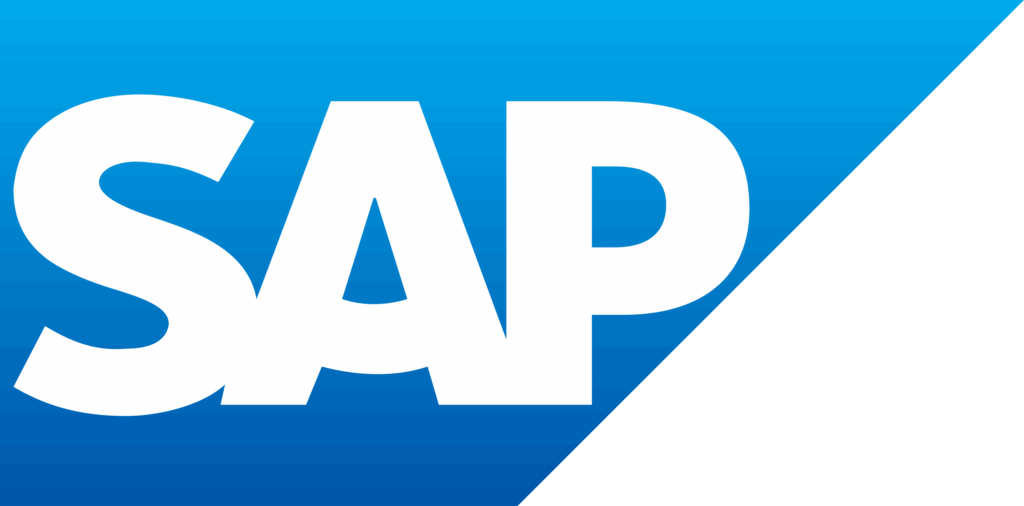
🏢 SAP: Empowering Regional Teams Without Losing Control
The challenge: SAP’s brand and creative teams needed to support Tier 1 events across global regions. That meant event videos had to be created same day, sometimes within hours of keynotes.
The risk? Off-brand outputs from non-designers working under pressure.
The solution: SAP worked with Lumen5 to create custom-branded templates that reflected their exact brand motion system. With logos, typography, and transitions locked in, global and regional teams could:
- Create short-form social videos immediately after events
- Keep everything on-brand without routing through creative
- Eliminate last-minute brand reviews for time-sensitive content
The result? Faster go-to-market timelines, improved regional agility, and a brand experience that never wavered.
As SAP’s team put it:
“We used to dread event-day content. Now we’re confident it’ll look right—every time.”

📰 Argus Media: Dividing Work by Strategic Value
The challenge: Their in-house creative team preferred full control over long-form, high-visibility videos, but they were also getting flooded with internal requests for short promos and news recaps.
The insight: Different videos require different levels of creative oversight. Instead of forcing a one-size-fits-all production pipeline, they introduced a simple system:
- Videos under 2 minutes = built by marketers in Lumen5
- Videos over 10 minutes = crafted by the creative team in Adobe tools
The result?
- More output across formats
- Clear creative ownership based on complexity
- A happier, less overwhelmed design team
“Lumen5 is ideal for short-form content where speed matters. It freed up our creative team to focus on what they’re best at.”
These aren’t niche use cases. They’re examples of a repeatable model:
- Use branded templates to empower regional and marketing teams
- Give creative leads strategic oversight, not every executional task
- Define ownership based on impact, not just who can do the work
When you frame AI as a tool that protects brand and liberates creatives, adoption skyrockets, and content performance follows.
What Smart CMOs Understand About Creative Productivity and Control
The most effective CMOs aren’t asking how to replace people with AI. They’re asking how to remove the friction that slows their teams down.
And in organizations where brand and creative teams are pulled in every direction, that friction is real:
- Endless production cycles
- Review bottlenecks
- Constant trade-offs between quality and speed
Here’s what top marketing leaders are doing differently.
🧠 They’re Segmenting Creative Work by Value, Not Volume
Not every piece of content deserves full creative resourcing.
Savvy CMOs are setting up two tracks for video:
- Track 1: High-stakes brand and campaign content → handled by in-house creative or agency partners
- Track 2: Evergreen, repurposed, or reactive content → created by marketers using AI tools within approved templates
This simple distinction keeps creative teams focused and brand-safe content flowing.
📏 They’re Setting Guardrails, Not Gatekeeping
Brand protection doesn’t have to mean brand policing. Instead of trying to approve every piece of content manually, smart CMOs put the right tools in place:
- Branded templates in Lumen5 to control design and motion
- Role-based permissions so not everyone can publish without review
- Approvals built into the platform, not buried in email threads
This is what content automation without compromise actually looks like.
🔁 Creative Teams Are Getting Their Time and Purpose Back
When AI removes the high-volume noise, your best creatives finally get to focus on:
- Campaign ideation
- Brand storytelling
- Strategic design systems
- Innovation and testing
It’s not just about productivity. It’s about restoring purpose to the roles you hired them for.
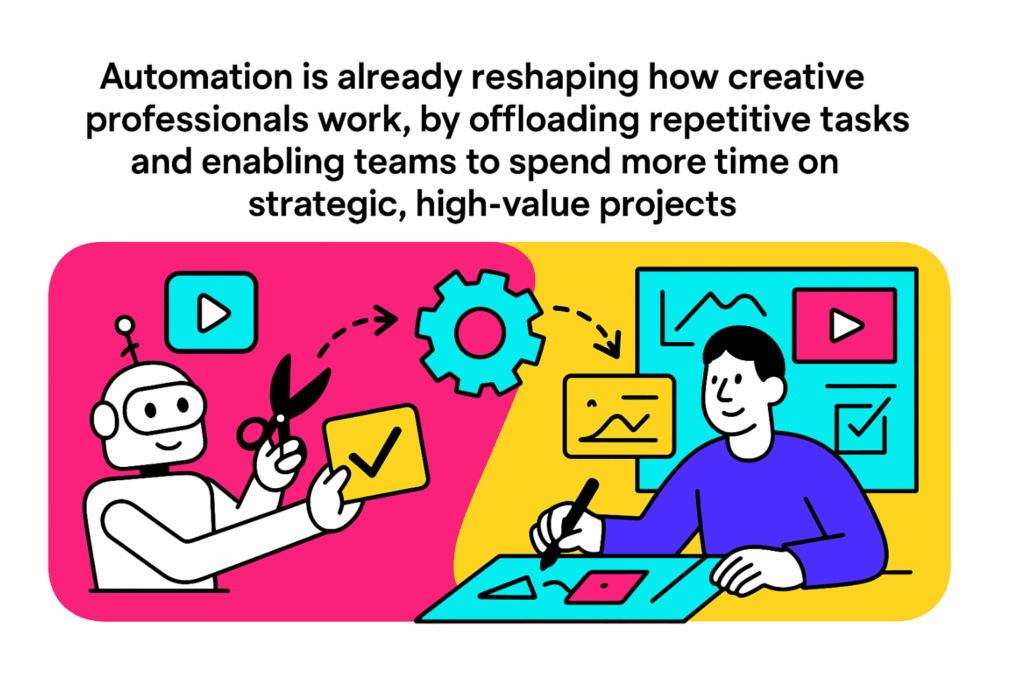
According to Deloitte’s Creativity in the Age of AI and Future of Work reports, automation is already reshaping how creative professionals work, by offloading repetitive tasks and enabling teams to spend more time on strategic, high-value projects. These tools don’t replace human creativity; they protect it by giving it room to grow.
More capacity, without more chaos.
When CMOs set the right systems and expectations:
- Brand teams become brand enablers
- Creative teams become creative leaders
- Marketing teams become self-sufficient producers, within the right boundaries
The fear goes away. The friction goes down, and your content machine finally works the way it should.
How to Introduce AI Without Losing Your Team’s Trust
Introducing AI tools into a marketing org isn’t just a technology decision, it’s a culture move.
Get it right, and you accelerate your brand.
Get it wrong, and you risk alienating the very teams that make your marketing work.
Here’s how smart marketing leaders roll out AI content tools like Lumen5, without sparking fear or backlash.
✅ 1. Start with the “Why,” Not the Wow
Don’t sell AI as magic. Sell it as relief.
Focus your messaging around freeing up teams, protecting brand standards, and accelerating high-volume needs without adding chaos.
Instead of this:
“This AI tool will create video content in seconds!”
Say this:
“We’re using Lumen5 so the creative team can stop getting bogged down by repetitive requests, and focus on what really moves the brand forward.”
✅ 2. Involve Brand and Creative Teams Early
This isn’t a top-down rollout. It’s a collaborative evolution.
- Let the brand team co-develop templates
- Let creatives give feedback on motion rules and pacing
- Show both teams how the tool protects their standards—not overrides them
When teams shape the system, they’re more likely to champion it.
✅ 3. Clarify Boundaries for Ownership
A common failure point? Ambiguity.
Avoid it by setting clear lines:
- Who can create content in Lumen5?
- What kinds of videos are appropriate for self-service?
- What requires creative input or brand sign-off?
Use video length, audience, or distribution channel as filters. (Example: Videos under 90 seconds can be self-serve; over 3 minutes go to creative.)
✅ 4. Use Approvals Strategically
Don’t default to micromanagement. Use Lumen5’s built-in approval workflows so brand and creative can review outputs without blocking the process.
This makes compliance scalable, and gives your leads peace of mind.
✅ 5. Celebrate the Wins That Matter
The first time a regional team produces an on-brand video without needing creative help? Celebrate it.
When a designer says they finally had time to explore a new campaign concept? Call that out.
Turn these moments into stories that reinforce the value of the change.
Done right, AI rollouts don’t erode trust. They build it—by respecting what each team does best, and giving them the tools to thrive.
Your Brand Is Ready to Scale. Is Your Workflow?
The modern marketing engine doesn’t run on intuition alone. It runs on clarity, velocity, and creative alignment.
If you’re a CMO or senior marketing leader, you already know:
- Your channels are multiplying
- Your content demands are rising
- Your brand integrity is harder to protect with every new stakeholder
But the solution isn’t more bandwidth. It’s better boundaries, and smarter systems. That’s where AI content creation tools like Lumen5 come in.
🔒 For Brand Teams: Control Without Compromise
Your brand team should be setting the vision, not chasing down font violations.
With Lumen5’s branded templates, you lock in the look, feel, and behavior of every video element. That means:
- No off-brand typography
- No rogue transitions
- No last-minute panic over approvals
You move faster because your rules are built into the workflow.
🎨 For Creative Teams: More Creativity, Less Repetition
Your designers are tired of resizing videos and localizing CTAs. They want to do the work that earns awards, drives campaigns, and builds stories that last.
Lumen5 takes on the tedious parts:
- The simple promo cuts
- The event recaps
- The short-form content that floods your queue
So they can finally do the work that matters, without being overworked.
📈 For Marketing Leaders: A System That Actually Scales
This isn’t about “AI for the sake of AI.” It’s about content automation without compromise.
With Lumen5, you create a distributed, brand-safe content engine where:
- Regional teams can produce high-quality assets on demand
- Brand teams enforce standards through systems, not bandwidth
- Creative teams get space to innovate and lead
All of it made possible by you.
👇 Want to See It in Action?
If you’re exploring how to scale content without sacrificing brand or creativity, take the next step:
🎥 Watch our Creatives vs. AI series
📊 See how other companies are using Lumen5
Because the teams who adopt AI with intention aren’t just keeping up. They’re pulling ahead.
It’s not man vs. machine. It’s brand vision + creative tools + marketing execution—working in sync.
And the future belongs to those who get it right.



